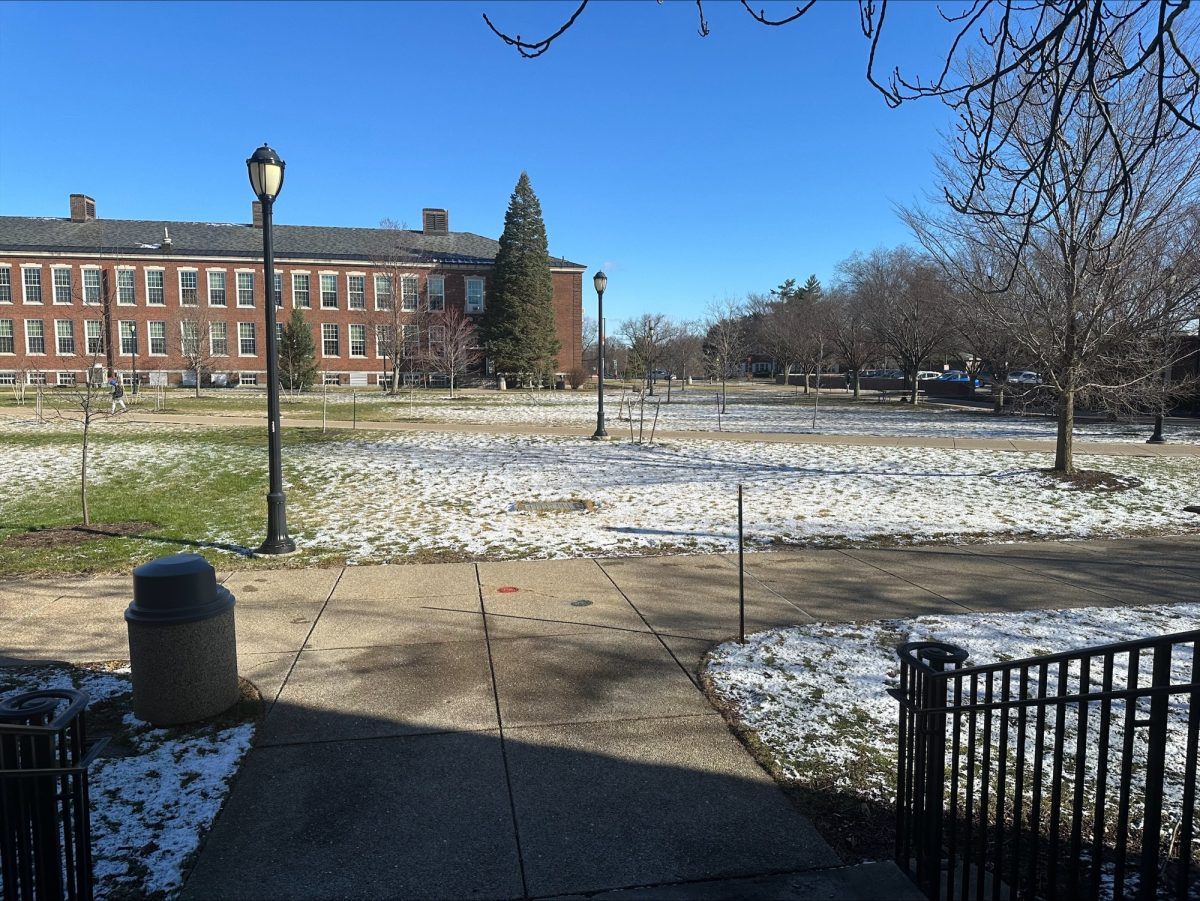On the week of March 4, we got to experience 70-degree weather! However, by that Sunday it had turned back into snow. You might be asking yourself, why is Buffalo like this?
Buffalo tends to have colder spring weather than other parts of the country. Snow occasionally falls during March-April. Sometimes students find themselves having to go back to their closet and pull out their winter jacket. Most people want to get rid of those jackets and kiss winter goodbye when Spring begins.
I interviewed Buffalo State University Professor of Geosciences Stephen Vermette to get some answers:
Why is Buffalo colder than other places during Spring?
Buffalo is cooler for our latitude, and that has much to do with the usual accumulation of ice in the eastern end of Lake Erie. The accumulation is due to Lake Erie’s Spring ice breakup and prevailing southwest winds which pile up the ice at our end of the lake. The ice acts like a refrigerator, or an ice box, where winds blowing across the ice are cooled before passing into Buffalo. One of our region’s greatest myths is that the ice boom, located at the confluence of Lake Erie and the Niagara River, accounts for the ice buildup and cooling of the city. While the ice boom limits the amount of ice flowing down the Niagara River, and protects the power intakes and docks downriver, it is not responsible for the ice buildup. There is plenty historic evidence to show that ice has always accumulated at our end of Lake Erie, well before the ice boom was first installed. Interestingly, with global warming and the subsequent warming of Lake Erie, the ice buildup in Spring may become less of an issue over time.
Is it going to keep snowing in March and April?
Well, yes. Historically, the Buffalo area has received snow in the months of March and April, and even in early May. Snow in March can be substantial but for April and May the average amount is typically small, averaging about 2.7 inches for April and much less for May, but there have been years where much has fallen. Perhaps the most famous is the Saint Patrick’s Day Blizzard of 1936 when 19 inches of snow fell in Buffalo, and May 1989 when almost 8 inches fell in the city over the month. Given the warmth of this past winter and the snow drought that the area has experienced thus far, it is likely that any meaningful snowfall is less likely for the approaching Spring. But it remains possible.
Does it get warmer in May?
January is our coldest month, so with each progressive month temperatures will warm as we move into Spring. This increasing temperature trend will end in July, our warmest month of the year. Typical May high temperatures will range, from the beginning to the end of the month, from 60 to 70 degrees, with lows ranging from 45 to 55 degrees.
What are some signs of Spring in Buffalo compared to other places?
While warming will assuredly occur, we do look for local signs of Spring. One of the earliest signs is the weather prognostications of the groundhog. The nation’s bell weather groundhog is Punxsutawney Phil, but WNY has its own groundhog – Dunkirk Dave. Both proclaimed an early spring this year. Unique to Buffalo is the removal of the Lake Erie ice boom – for several years a festival was timed to its removal. The region’s other signs of Spring are the Saint Patrick’s Day parade and Dyngus Day, including the parade, which is a Polish holiday that falls on the day after Easter.





















